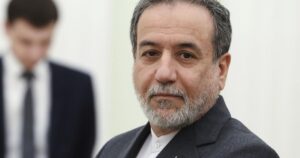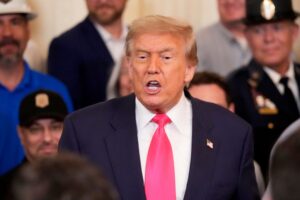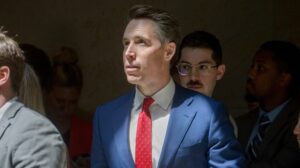The Dictatorship
I’m not just protesting kings — I’m protesting Christians idolizing Trump
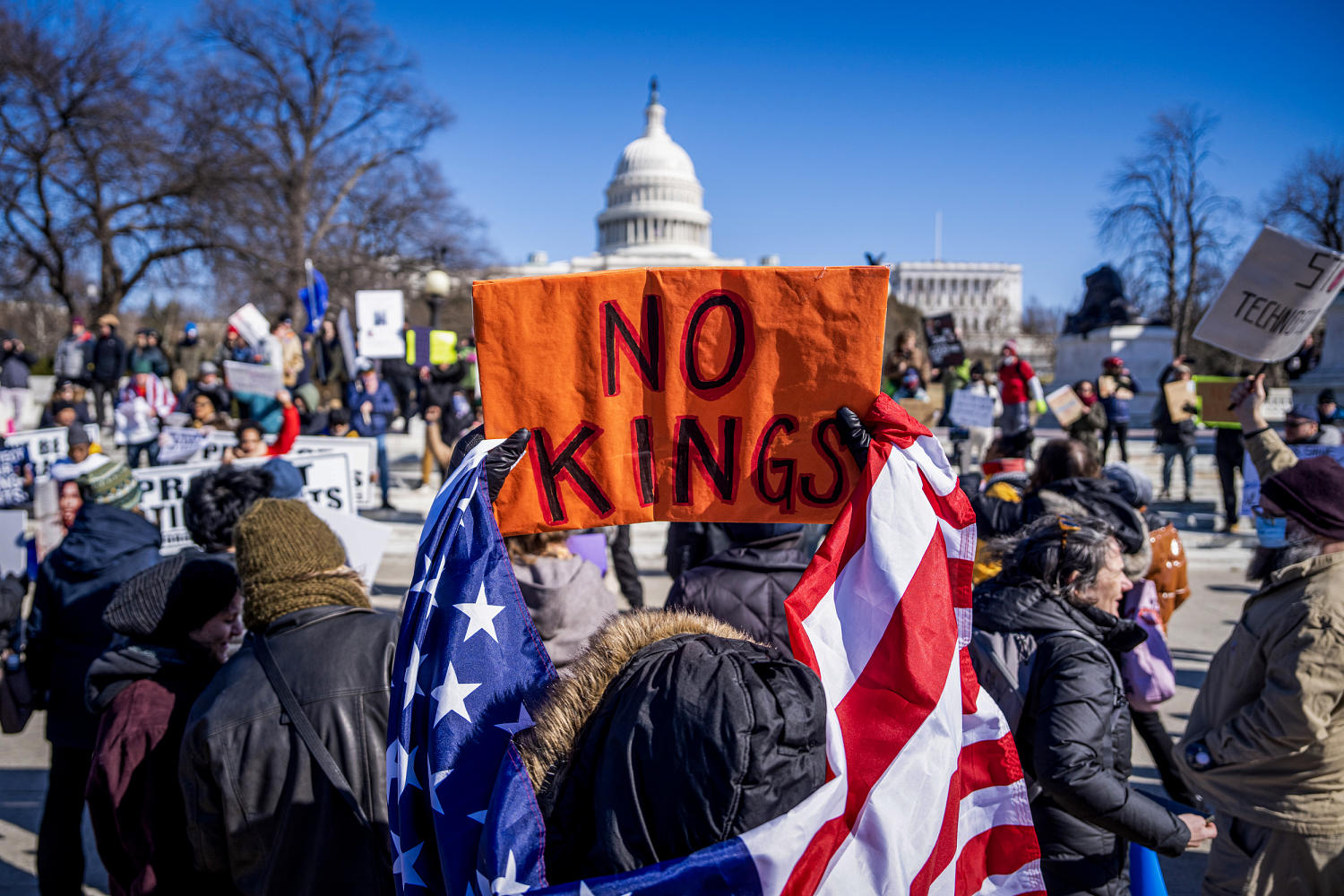
“I don’t feel like a king,” President Donald Trump told Republican lawmakers at the White House on Thursday in advance of the “No Kings” rallies happening around the country on Saturday. Lest you think the president was acknowledging the restraints on his power, it actually sounded more like he was bemoaning those constitutional guardrails and giving voice to kingly ambitions.
It sounded like he was bemoaning constitutional guardrails and giving voice to kingly ambitions.
He has made his kingly ambitions known on social media this year. “LONG LIVE THE KING!” he posted on Truth Social in February. The White House account on X upped the ante by posting an AI-generated image of a coronated Trump on the cover of Time magazine with the headline “LONG LIVE THE KING!” In March, he reposted an AI-generated image of a lion wearing a crown labeled MAGA with the caption “Kings!”
Though Saturday is expected to be a high tide of authoritarianism — Trump is staging a $45 million birthday military parade even as he deploys the National Guard and Marines to squash political dissent in Los Angeles — the more than 2,000 “No Kings” rallies scheduled across the country should reflect an equally high tide of resistance.
I’m attending the flagship march and rally in Philadelphia, the city where the founders of the United States declared independence from the king of England and where we will declare our refusal to cower to a would-be king in the White House.
For the Philadelphia protest, Faithful Americaan online community of progressive Christians, is bringing its giant Trump Golden Calf balloon. It’s a reference to the Exodus passage about the ancient Israelites worshipping an idol they created while Moses was away on Mount Sinai receiving the Ten Commandments.
The Trump Golden Calf sends the unmistakable message that Christians worshipping Trump is idolatrous, and we rebuke our siblings in Christ who are providing spiritual cover for Trump’s authoritarian destruction of American democracy. Trump shows no evidence of personal piety or of an attempt to follow Jesus Christ — recall when he said he never had to ask God for forgiveness — and has made it a priority to aid the wealthy and attack the most vulnerable in our society. He exhibits the polar opposite of Christian social ethics.

And yet Trump rode back to the White House with Christian support, and many evangelical and Catholic leaders continue to stand by him even now.
At this pivotal moment, every Christian must ask whether their allegiance is to Christ or to Trump.
“Religious actors and communities have historically played key roles in both propping up and in dismantling authoritarian systems,” pro-democracy organizers Dr. Maria J. Stephan and Chris Crawford write in the “Faithful Fight” toolkit published by Protect Democracy. “Religious symbols, slogans, rituals, organizing infrastructure and communications networks have been important sources of power for autocrats and pro-democracy movements alike.”
As we march today, the Trump administration continues to terrorize communities in Los Angeles. Consider this account in The New York Times from a pastor there:
The Rev. Tanya Lopez, senior pastor of Downey Memorial Christian Church, said she was in her office on Wednesday when three SUVs with tinted windows pulled up to her church. Then, Ms. Lopez said, five men, some wearing badges and tan bulletproof vests that said “POLICE,” rushed out of the vehicles and detained a man in the parking lot. The men, Ms. Lopez said, refused to identify which agency they worked for, and they did not share their names or badge numbers when asked. Their vehicles had out-of-state license plates. They also did not provide a warrant, she said. They took the man into a black SUV. And, Ms. Lopez said that as she shouted instructions in Spanish to the man inside the vehicle, an agent drew a rifle at her.
When an officer pulls a gun on a pastor, it’s clear that Christians need to take sides. And yet Trump is sending an unmistakable signal: Christians who step out of line will be targeted. The Trump administration has already attacked the Catholic bishops, the Lutheran Church and Episcopal Bishop Mariann Budde. Trump’s congressional allies this week launched an aggressive investigation of a wide range of faith-based groups for their work with migrants.
There are signs of growing Christian resistance to Trump’s authoritarianism. Majorities of all Christian groups oppose Trump’s military parade, according to a new poll by the Public Religion Research Institute. This includes Hispanic Catholics (87%), Black Protestants (85%), Hispanic Protestants (78%) white mainline Protestants (72%), white Catholics (65%) and white evangelical Protestants (64%).
In the Gospel of Luke, God sends the angel Gabriel to Mary who tells her that Jesus will be given “the throne of David, his father. He will rule over Jacob’s house forever, and there will be no end to his kingdom.”
Christians believe Christ’s kingdom will reign forever. As American Christians in the year 2025, we must also believe and work to ensure that Trump’s power, granted to him by voters, ends at the end of his second term in accordance with the Constitution. And every day, until the end of his presidency, he must be prevented from acting like a king and made to remember that we live in a democracy.
Guthrie Graves-Fitzsimmons is vice president of programs and strategy at Interfaith Alliance and the author of “Just Faith: Reclaiming Progressive Christianity.”
The Dictatorship
Trump says Iran must open itself to inspection to verify it doesn’t restart its nuclear program

DUBAI, United Arab Emirates (AP) — U.S. President Donald Trump said on Friday that he expects Iran to open itself to international inspection to verify that it doesn’t restart its nuclear program.
Asked during a White House news conference if he would demand during expected talks with Iran that the International Atomic Energy Agency, the U.N. nuclear watchdog, or some other organization be authorized to conduct inspections, Trump responded that the Islamic Republic would have to cooperate with the group “or somebody that we respect, including ourselves.”
Earlier, Iran’s top diplomat said that the possibility of new negotiations with the United States on his country’s nuclear program has been “complicated” by the American attack on three of the sites, which he conceded caused “serious damage.”
The U.S. was one of the parties to the 2015 nuclear deal in which Iran agreed to limits on its uranium enrichment program in exchange for sanctions relief and other benefits.
Nuclear talks
That deal unraveled after Trump unilaterally pulled out the U.S. during his first term. Trump has suggested he’s interested in new talks with Iran and said the two sides would meet next week.
In an interview on Iranian state television broadcast late Thursday, Foreign Minister Abbas Araghchi left open the possibility that his country would again enter talks on its nuclear program, but suggested it wouldn’t be anytime soon.
“No agreement has been made for resuming the negotiations,” he said. “No time has been set, no promise has been made, and we haven’t even talked about restarting the talks.”
The American decision to intervene militarily “made it more complicated and more difficult” for talks on Iran’s nuclear program, Araghchi said.
Defense Secretary Pete Hegseth, left, speaks at a news conference with Joint Chiefs Chairman Gen. Dan Caine at the Pentagon, Thursday, June 26, 2025 in Washington. (AP Photo/Kevin Wolf)
Defense Secretary Pete Hegseth, left, speaks at a news conference with Joint Chiefs Chairman Gen. Dan Caine at the Pentagon, Thursday, June 26, 2025 in Washington. (AP Photo/Kevin Wolf)
Friday prayers
Many imams, during Friday prayers, stressed Supreme Leader Ayatollah Ali Khamenei’s message from Thursday that the war had been a victory for Iran.
Cleric Hamzeh Khalili, who is also the deputy chief justice of Iran, vowed during a prayer service in Tehran that the courts would prosecute people accused of spying for Israel “in a special way.”
During the war with Israel, Iran hanged several people whom it already had in custody on espionage charges, sparking fears from activists that it could conduct a wave of executions after the conflict ended. Authorities reportedly have detained dozens in various cities on the charge of cooperating with Israel.
Israel relentlessly attacked Iran beginning on June 13, targeting its nuclear sites, defense systems, high-ranking military officials and atomic scientists.
In 12 days of strikes, Israel said that it killed around 30 Iranian commanders and 11 nuclear scientists, while hitting eight nuclear-related facilities and more than 720 military infrastructure sites. More than 1,000 people were killed, including at least 417 civilians, according to the Washington-based Human Rights Activists group.
Iran fired more than 550 ballistic missiles at Israel, most of which were intercepted, but those that got through caused damage in many areas and killed 28 people.
Israeli military spokesperson Brig. Gen Effie Defrin said Friday that in some areas, it had exceeded its operational goals, but needed to remain vigilant.
“We are under no illusion, the enemy has not changed its intentions,” he said.
The U.S. stepped in on Sunday to hit three of Iran’s nuclear sites with bunker busters dropped by B-2 bombers — explosives designed to penetrate deep into the ground to damage the heavily fortified targets. Iran, in retaliation, fired missiles at a U.S. base in Qatar on Monday, but caused no known casualties.
Trump and Khamenei claims
Trump said that the American attacks “completely and fully obliterated” Iran’s nuclear program. However, Khamenei on Thursday accused the U.S. president of exaggerating the damage, saying the strikes didn’t “achieve anything significant.”
Joint Chiefs Chairman Gen. Dan Caine steps away from the podium following a news conference at the Pentagon, Thursday, June 26, 2025 in Washington. (AP Photo/Kevin Wolf)
Joint Chiefs Chairman Gen. Dan Caine steps away from the podium following a news conference at the Pentagon, Thursday, June 26, 2025 in Washington. (AP Photo/Kevin Wolf)
In response, Trump told reporters Friday that the sites were “bombed to hell.” He even directed a message to the supreme leader: “Look you’re a man of great faith. A man who’s highly respected in his country. You have to tell the truth. You got beat to hell.”
A senior Israeli military official said Friday that their intelligence shows that Israel’s strikes on various targets neutralized Iran’s ability to enrich uranium to 90% for “a prolonged period.” It was unclear whether that contradicted a preliminary U.S. report that suggested the program had been set back months.
There has been speculation that Iran moved much of its highly-enriched uranium before the strikes, something that it told the IAEA that it planned to do.
Even if that turns out to be true, IAEA Director-General Rafael Mariano Grossi told Radio France International that the damage done to the Fordo site, which was built into a mountain, “is very, very, very considerable.”
Among other things, he said, centrifuges are “quite precise machines,” and it’s “not possible” that the concussion from multiple 30,000-pound bombs wouldn’t have caused “important physical damage.”
“These centrifuges are no longer operational,” he said.
Araghchi himself acknowledged “the level of damage is high, and it’s serious damage.”
He added that Iran hadn’t yet decided whether to allow in IAEA inspectors to assess the damage, but they would be kept out “for the time being.”
___
Aamer Madhani in Washington. and Julia Frankel and Sam Mednick in Jerusalem, contributed to this story.
The Dictatorship
The Supreme Court just fumbled a basic question about birthright citizenship
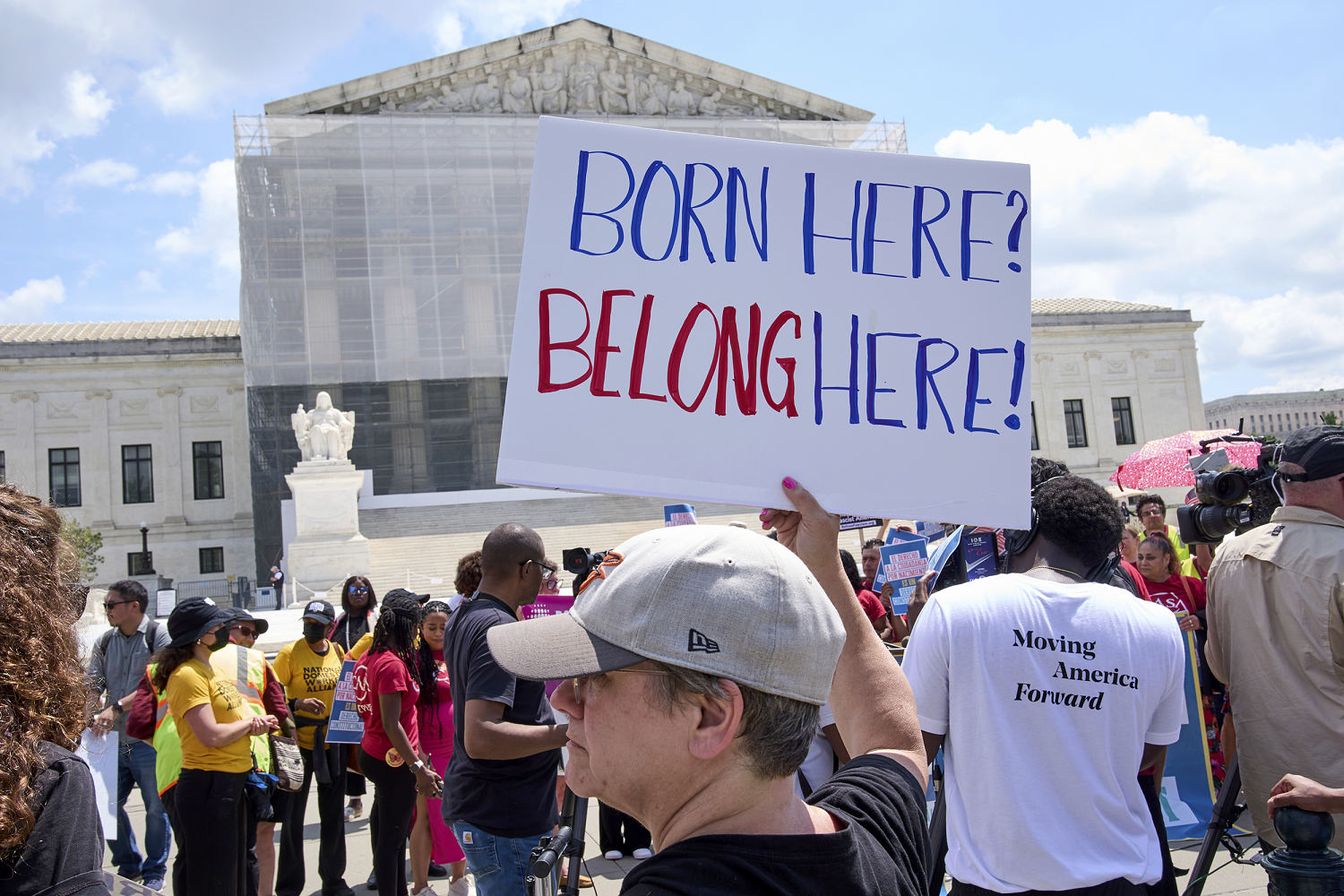
If you arose Friday morning thinking the U.S. Supreme Court would finally settle the question of birthright citizenship, you were disappointed. We know no more now than we did Thursday about how Chief Justice John Roberts’ court regards children born here: The liberal three-justice minority is certain all are citizens, while the conservative six-person majority remained mum. That conservative majority avoided addressing the constitutionality of President Donald Trump’s executive order restricting birthright citizenship and chose instead to reject so-called “universal injunctions” blocking his executive order.
All we learned Friday is that a final resolution to the question of birthright citizenship is somewhere in the distance.
All we learned Friday is that a final resolution to the question of birthright citizenship is somewhere in the distance, beyond many more rounds of court proceedings.
For families directly targeted by Trump’s Jan. 20 executive orderwhich aims to bar children born to nonpermanent residents from automatic citizenship, too little has changed. Such families — and especially their yet-to-be born children — remain in the crosshairs of a dispute that will continue unresolved at least for months to come. Going forward, such families will be subjected to harrowing circumstances, not knowing where they stand before the court and the Constitution.
By some accounts, we are five months into this era of uncertainty regarding citizenship. But we have endured years, decades, even centuries of confusion about citizenship.
We know that Trump intended to do away with birthright citizenship seven years ago, even though details were lacking. Consult the Congressional Record, and you’ll discover that the language in Trump’s executive order is similar to the language of bills that have been put forward every session since at least 2003. Scour law review articles and you’ll learn that as far back as the 1980s, some legal scholars have promoted the view that children of noncitizens born in the U.S. cannot be birthright citizens.
This longer view of the dispute over birthright citizenship helps explain why we, in this moment, feel so worn down by the evasion that is Friday’s Supreme Court decision. How long should Americans, especially children born in this country and their families, be expected to endure such indecision, confusion and uncertainty?
Perhaps we should not be surprised to find Roberts’ 21st century court fumbling the birthright citizenship question. Indeed, the origins of birthright citizenship in the United States are in the ignoble ineptitude of lawmakers two centuries ago. In early America, free Black Americans, nonimmigrants, were a despised group, and they were regularly confronted by those who argued that they were not citizens and thus had no rights before the courts or the Constitution.
It was a harrowing existence. In the nation’s early years, the American Colonization Society organized to press free Black Americans to leave the country, to places such as the West African colony of Liberia. The ACS outfitted ships, funded travel and encouraged Black Americans to self-deport, all to preserve the U.S. as a white man’s country. State lawmakers and local officials played their part, enacting so-called Black laws that constrained everyday life — where they worked and worshipped, how they traveled and raised their children — all to further encourage free Black Americans to leave.
Were free Black Americans citizens? They believed so and looked to the terms of the Declaration of Independence and the Constitution for authority. All men were created equal, they insisted. The Constitution recognized birthright citizenship and drew no color line, they urged. Today, we can read their ideas in early American newspapers, pamphlets and books. They are to be credited with promoting the terms of their own belonging, and those of all persons born in the United States. Their rallying cry: Citizenship in the U.S. was the result of birth, no more and no less.
Early American lawmakers failed Black Americans, leaving them to make families, lives and communities in the face of profound uncertainty.
Early American lawmakers failed Black Americans, leaving them to make families, lives and communities in the face of profound uncertainty. For example, in 1821, when Congress considered admitting Missouri into the Union, lawmakers asked whether Black Americans would have the right to enter the new state. Only if they were citizens, it was said, and a debate ensued with representatives taking both sides. The result was a twisted injustice: Congress never firmly answer the question and instead admitted Missouri while leaving Black Americans mired in ambiguity.
Also in 1821, U.S. Attorney General William Wirt was asked to resolve whether a free Black man could command a ship in Virginia’s coastal waters. The law provided that he could only if he were a citizen. Thus, Wirt was charged with solving the riddle of Black citizenship. But he did not. Instead, he reached a twisted conclusion: In Virginia, a free Black man could not be a citizen, but in another state he perhaps could. Once again, Black Americans were left to make lives under murky circumstances.
Notoriously, in the 1857 Dred Scott casethe U.S. Supreme Court concluded that no Black American could be a citizen. Or at least this is how the story is often told. A closer look reveals that the nation’s high court was deeply divided in that instance. Justice Roger Taney was sure that Black Americans were not birthright citizens. Still, his fellow jurists, Associate Justices Benjamin Curtis and John McLean, took the opposite view. Birthright, they concluded, was the law of the land and, absent a color bar in the Constitution, Black Americans, like their white counterparts, were citizens. The high court failed to settle much at all. Black Americans might be citizens to some, but to others they were subject to Black laws and colonization.
It would take a Civil War and a remaking of the Constitution during Reconstruction to settle debates over Black citizenship. The 14th Amendment constitutionalized the birthright principle that Black Americans had long championed. Along the way, Black Americans learned hard lessons, and so should we. The nation’s founding documents can be subjected to interpretation and reinterpretation in the hands of lawmakers, courts and the executive branch. Those designated as despised can be variously regarded as citizens and noncitizens, while lawmakers fumble and fail to settle the debate.
Those designated as despised can be variously regarded as citizens and noncitizens, while lawmakers fumble and fail to settle the debate
Most of all, by recalling the struggles of Black Americans for birthright citizenship, we better understand that uncertainty before the law is its own form of inhumanity. Being the object of debate is its own sort of harrowing existence. In early America, Black Americans made homes, raised children, established businesses and built a political culture — all the while facing down efforts to banish, exile or otherwise remove them from the nation. We rightly admire their courage and persistence. At the same time, we can recognize the price they paid for being subject to the deliberations of lawmakers who avoided, sidestepped, punted and otherwise refused to settle their status as birthright citizens.
Friday, the nation’s high court fumbled. Rather than affirm the birthright principleit put that question off for another day. In the months ahead, there will be briefs filed and arguments presented. At the same time, there will also be harrowing days ahead for immigrant Americans and their children, people who urgently await a determination of their standing as birthright citizens before the Constitution.
As a nation, we owe them at least that.
Martha S. Jones
Martha S. Jones is the Society of Black Alumni President Professor and Professor of History at The Johns Hopkins University. She is author of the prize-winning “Birthright Citizens: A History of Race and Race in Antebellum American” (2018, Cambridge University Press.) She is also the author of an amici cruise brief on the subject of birthright citizenship along with historian Kate Masur.
The Dictatorship
What this congressman’s shockingly racist post says about bigotry in Trump 2.0

If there is a defining characteristic of President Donald Trump’s second term — aside from shameless self-enrichment out of the executive branch — I’d argue it’s the proliferation of unabashed and outspoken racism espoused by the president and many of his most loyal followers.
The online attacks launched by Rep. Andy Ogles, R-Tenn., against New York City mayoral candidate Zohran Mamdani demonstrated this in stark relief, such as here:
As did many of the other GOP responses to Mamdani’s Democratic primary victory this week, which my BLN colleague Steve Benen highlighted for MaddowBlog. This reactionary post from Charlie Kirk, which reads like Ku Klux Klan propaganda, is a prime example:
During a recent conversation with MSNBC’s Chris Hayesauthor Ta-Nehisi Coates said that one of the Civil Rights Movement’s greatest successes has fallen apart in the Trump era: People no longer feel ashamed to express “open bigotry.” Coates added that one of Trump’s most successful political instincts has been his bet that conservative voters are broadly more comfortable with the racist rhetoric that previous Republicans have flirted with a bit more obliquely.
Indeed, this administration has spent its opening months seemingly grooming the MAGA movement to be OK with blatant racism — or, at minimum, accept it as a natural part of political discourse. Even when compared with Trump’s first administration, which promoted diversity programs and parted ways with a speechwriter after it was revealed he spoke at a conference attended by white nationalists, Trump 2.0 has been far more permissive of unabashed bigotry.
Indeed, this administration has spent its opening months seemingly grooming the MAGA movement to be OK with blatant racism.
Trump welcomed the aforementioned speechwriter, Darren Beattie, into his second administration despite the fact that he wrote last year that “competent white men must be in charge if you want things to work.” Trump’s administration rehired after initially firing a Department of Government Efficiency staffer who had called for the normalization of Indian hate. And a host of other figures in the administration have a history of promoting various other blatantly bigoted ideas.
Trump himself has peddled false claimsspread broadly by white nationalists, that white people are facing systemic oppression in South Africa, and he has targeted an exhibit at the Smithsonian American Art Museum that discredits racist pseudoscience. Trump’s Department of Homeland Security itself has spread propaganda promoted by overtly racist social media accountsand his White House has frequently relied on cruel memes meant to dehumanize and mock nonwhite immigrants.
To be clear, MAGA racism is not a new phenomenon. But the president certainly seems to have given his followers a green light to embrace and express any racist hate they may be feeling. And all of this has the feel of a far-right psyop — as if the administration is attempting to train Americans’ gag reflexes in such a way that grotesque exhibitions of bigotry that may have made them squeamish in the past no longer do so.
-

 The Josh Fourrier Show8 months ago
The Josh Fourrier Show8 months agoDOOMSDAY: Trump won, now what?
-
Uncategorized8 months ago
Bob Good to step down as Freedom Caucus chair this week
-
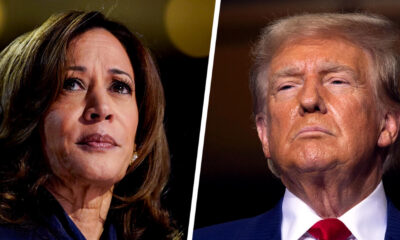
 Politics8 months ago
Politics8 months agoWhat 7 political experts will be watching at Tuesday’s debate
-

 Politics8 months ago
Politics8 months agoHow Republicans could foil Harris’ Supreme Court plans if she’s elected
-
Economy8 months ago
Fed moves to protect weakening job market with bold rate cut
-
Economy8 months ago
It’s still the economy: What TV ads tell us about each campaign’s closing message
-
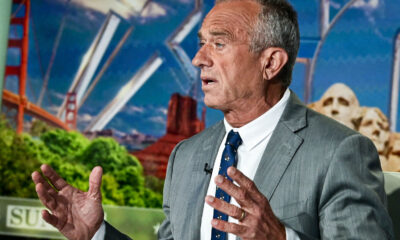
 Politics8 months ago
Politics8 months agoRFK Jr.’s bid to take himself off swing state ballots may scramble mail-in voting
-
Uncategorized8 months ago
Johnson plans to bring House GOP short-term spending measure to House floor Wednesday




